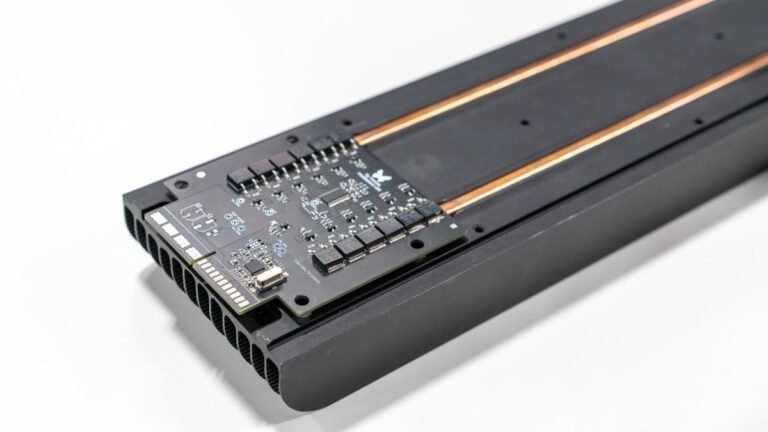
Hackers breached Microsoft to find out what Microsoft knows about themOn Friday, Microsoft disclosed that the hacking group it calls Midnight Blizzard, also known as APT29 — and widely believed to be sponsored by the Russian government — hacked some corporate email accounts, including those of the company’s “senior leadership team and employees in our cybersecurity, legal, and other functions.”Curiously, the hackers didn’t go after customer data or the traditional corporate information they may have normally gone after.
They wanted to know more about themselves, or more specifically, they wanted to know what Microsoft knows about them, according to the company.
“The investigation indicates they were initially targeting email accounts for information related to Midnight Blizzard itself,” the company wrote in a blog post and SEC disclosure.
According to Microsoft, the hackers used a “password spray attack” — essentially brute forcing — against a legacy account, then used that account’s permissions to “to access a very small percentage of Microsoft corporate email accounts.”Microsoft did not disclose how many email accounts were breached, nor exactly what information the hackers accessed or stole.
Microsoft took advantage of news of this hack to talk about how they are going to move forward to make itself more secure.

Her company Fuck You Pay Me (FYPM), which is like a Glassdoor for influencers, raised a $275K seed extension solely via Instagram stories, with no pitch deck.
On the platform, creators can review brands they’ve worked with, and share data like how much they were paid, how long it took for them to get paid.
So, with the new funding, Lurgin wants to remove these technical barriers to scale, without damaging the quality of the product.
Lurgin wants to make sure that creators and talent managers can access this information for free, so long as they upload verified reviews.
She also wants FYPM to develop an API, allowing talent companies to upload their own data directly to the platform.

Google researchers say they have evidence that a notorious Russian-linked hacking group — tracked as “Cold River” — is evolving its tactics beyond phishing to target victims with data-stealing malware.
Cold River, also known as “Callisto Group” and “Star Blizzard,” is known for conducting long-running espionage campaigns against NATO countries, particularly the United States and the United Kingdom.
Researchers believe the group’s activities, which typically target high-profile individuals and organizations involved in international affairs and defense, suggest close ties to the Russian state.
Google says that on discovery of the Cold River malware campaign, the technology giant added all of the identified websites, domains, and files to its Safe Browsing service to block the campaign from further targeting Google users.
Google researchers previously linked the Cold River group to a hack-and-leak operation that saw a trove of emails and documents stolen and leaked from high-level Brexit proponents, including Sir Richard Dearlove, the former head of the U.K. foreign intelligence service MI6.

The latest is Recraft, an AI graphic design generator aimed at professionals, which has raised a $12 million Series A round led by Khosla Ventures in Silicon Valley, together with former GitHub CEO, Nat Friedman.
Admittedly there are now myriad Generative AI design tools out there, such as Jasper, Adobe Sensei, Let’s Enhance, and many others.
And then you generate images using this style of reference.
But to date, many of the generative AI design solutions have been targeting consumers, rather than professionals that require high degrees of control.
Recraft delivers on professional workflows such as vector images, style controls and end-to-end content production, all powered by in-house built foundation models.”

Apple’s response to being required to allow developers to lever payment options apart from its in-house system is drawing a bevy of negative commentary from tech folks.
And with good reason: Apple is offering little and demanding much, ensuring that it can continue to demand a massive cut of developer revenue.
The reduction in demands constitutes a full 3% reduction from its existing 30% fee charged to payments that occur inside of its App Store system.
Simply put, Apple is trying to offer developers what it has to, but with enough costs attached to make it economically unpalatable.
Eric Seufert of Heracles Capital, described Apple’s posture as “heads I win, tails you lose,” which feels pretty accurate.

But in this world of exploding innovation in the AI industry, a great name paired with a great product will make your technology rise above.
Should you use “AI” in your product or company name?
In this world of exploding innovation in the AI industry, a great name paired with a great product will make your technology rise above.
The acronym AI is used in many of the new names in the market, from established frontrunner OpenAI to Elon Musk’s newly launched xAI.
Incorporating “AI” into your technology or company name can be done in a few different ways.

A lot of this energy is output as heat, which needs to be cooled back down in data centers.
That’s the basic concept behind Hestiia, which takes a miner, puts it on a radiator on your wall, and uses the excess heat from mining for coins to heat your house.
The use of conductive layers and heat pipes ensures efficient heat transfer, making the most of the emanated warmth.
The dual-core heating system provides both convection and radiant heating, and the system is controlled via an app, which enables the user to set the desired temperature.
With data centers consuming vast amounts of electricity and producing heat that is often wasted, Hestiia’s approach offers a sustainable solution.

PhotoRoom — a startup out of Paris, France — has built a popular AI-based image editing app and API targeting e-commerce vendors, media specialists, and others.
Multiple sources say that the startup is raising between $50 million and $60 million on a pre-money valuation of between $500 million and $600 million.
PhotoRoom, and Matthieu Rouif, the CEO who co-founded PhotoRoom with CTO Eliot Andres, declined to comment on any funding-related questions.
Adding all this together, since its last round in 2022, when it raised $19 million, PhotoRoom has been blowing up.
Most categories of apps, she wrote, are still up for grabs; and within the popular area of AI image-based tools, apps like PhotoRoom, in her opinion, have a shot at success.

Now, before you get too excited about the “quantum” part of “Azure Quantum Elements” (and why wouldn’t you — it’s in the name, after all), let’s get this out of the way first: No quantum computer was used in this project.
Azure Quantum Elements, which launched last summer, combines AI and traditional high-performance computing (HPC) techniques into what is essentially a workbench for scientific computing, with the promise of providing access to Microsoft’s quantum supercomputer in the future.
Krysta Svore, who leads Microsoft Quantum, told me that the overall idea here was to see how far the team could push what is currently available in Azure Quantum Elements (AQE) — and especially the AI accelerator — to advance materials discovery.
After that, the researchers used existing HPC techniques to identify those 18 promising candidates to focus on.
And while the quantum computing community continues to push the state of the art ahead at a steady pace, we’re still at least a few years away from seeing a quantum computer that is actually useful.

Microsoft today announced that it has worked with the U.S. Department of Energy’s Pacific Northwest National Laboratory (PNNL) to use its Azure Quantum Elements service to whittle down millions of potential new battery materials to only a few — with one of them now in the prototype stage.
Now, before you get too excited about the ‘quantum’ part of ‘Azure Quantum Elements’ (and why wouldn’t you — it’s in the name, after all), let’s get this out of the way first: no quantum computer was used in this project.
Azure Quantum Elements, which launched last summer, combines AI and traditional high-performance computing (HPC) techniques into what is essentially a workbench for scientific computing, with the promise of providing access to Microsoft’s quantum supercomputer in the future.
Krysta Svore, who leads Microsoft Quantum, told me that the overall idea here was to see how far the team could push what is currently available in Azure Quantum Elements (AQE) — and especially the AI accelerator — to advance materials discovery.
And while the quantum computing community continues to push the state of the art ahead at a steady pace, we’re still at least a few years away from seeing a quantum computer that is actually useful.













